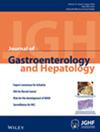Comparative Success Rate and Adverse Effects of Endoscopic Sphincterotomy Versus Endoscopic Papillary Large Balloon Dilation in Large Common Bile Duct Stones Removal. A Propensity Scores Inverse Weighting Analysis
Abstract
Background/Aims
Endoscopic sphincterotomy (EST) is a standard treatment for common bile duct (CBD) stones. Endoscopic sphincterotomy combined with endoscopic papillary large balloon dilation (EST-EPLBD) is an effective treatment for difficult CBD stones. This study aims to evaluate and compare the effectiveness and adverse effects of EST-EPLBD and EST in treating large CBD stones.
Methods
We retrospectively analyzed the data of 85 patients with large CBD stones who underwent either EST or EST-EPLBD, resulting in successful CBD stone extraction from January 2018 to June 2022. Propensity score inverse weighting was performed to reduce the possible bias in baseline characteristics between the two treatment groups. The success rate of complete stone removal in the first session, mechanical lithotripsy use, and adverse events were analyzed by multivariable risk regression analysis.
Results
The rate of complete stone removal in one session of the EST-EPLBD group was higher than that of the EST group at 28.78% (95% confidence interval [CI] 4.43, 50.1; p = 0.003). Mechanical lithotripsy use was decreased in the EST-EPLBD group by 25.81% (95% CI 42.33,9.28; p = 0.002). However, the incidence of adverse events is comparable.
Conclusion
EST-EPLBD may be utilized in the treatment of CBD stones that exceed a diameter of 10 mm. The EST-EPLBD increased the rate of complete stone removal in a single session and reduced the need for mechanical lithotripsy. Conversely, the incidence rate of adverse events is similar.

 求助内容:
求助内容: 应助结果提醒方式:
应助结果提醒方式:


